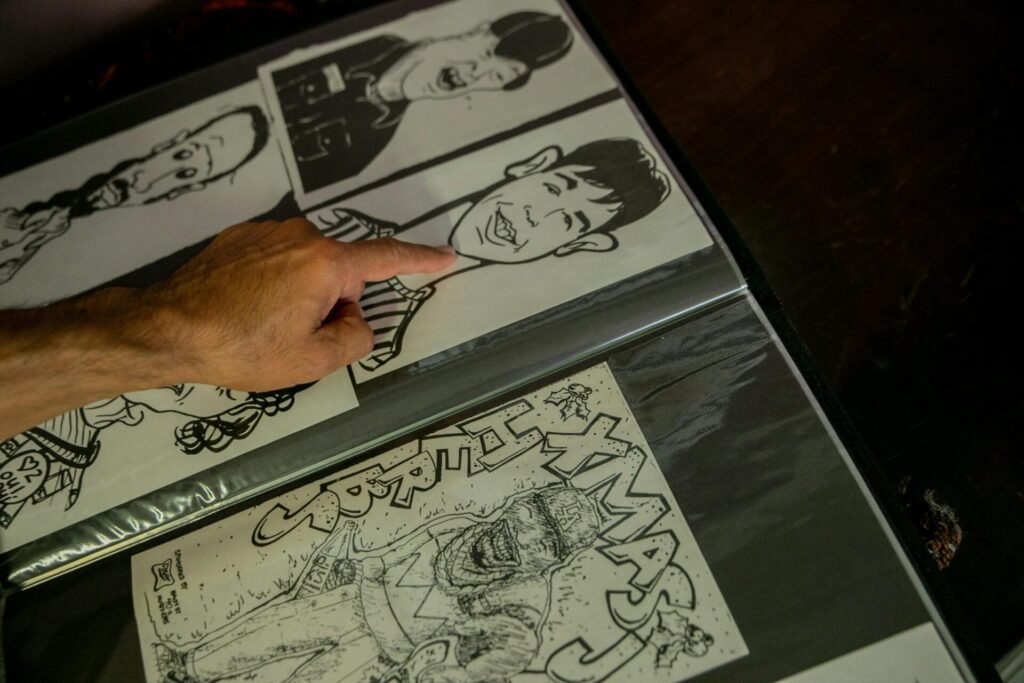Why Artistic Visibility Matters
In today’s saturated art world, the challenge isn’t just creating great work—it’s knowing how to get your artwork seen. Visibility is key for emerging and professional artists alike. Whether you’re building your career or seeking new audiences, mastering the art of promotion and connection can elevate your creative impact.
Creating art is deeply personal, but sharing it is what turns a private practice into a public dialogue. Building artistic visibility allows you to grow your audience, attract opportunities, and establish a recognizable voice in your niche. Without visibility, even the most compelling artwork can remain unseen.
Artists thrive not only on inspiration but also on feedback, connection, and community engagement. In essence, if you’re not being seen, you’re not being remembered.
Building a Strong Online Presence
The digital era offers endless pathways to showcase your work, but consistency and strategy are essential. A few key areas to focus on:
Optimize Your Artist Website
Your website should act as a central hub. Keep your gallery up to date, write a short and personable bio, and ensure your site is mobile-friendly. Use image alt text, targeted meta descriptions, and keyword-rich titles like “contemporary abstract painter” or “urban ink illustrations” to boost your searchability.
Leverage Social Media Strategically
Platforms like Instagram, TikTok, and Pinterest are visual by nature—perfect for artists. Use hashtags wisely, post behind-the-scenes content, engage with your followers, and participate in art challenges. Authenticity matters more than perfectly curated content.
Create Search-Optimized Content
Start a blog, post timelapse videos, or record short process clips. Use keywords like artist portfolio, art promotion tips, art inspiration, and how to grow as an artist to naturally draw traffic to your site.
Engage with Online and Local Art Communities
Building connections with other artists and potential buyers is crucial.
Submit to Multiple Online Art Platforms
Sites dedicated to showcasing creative portfolios —such as online galleries (like here at Sketchbooks.org) or juried digital exhibitions—can introduce you to new audiences. Tailor each submission to the site’s focus and include a short artist statement.
Join Artist Forums and Groups
Reddit, Discord, and Facebook have thriving communities for all art styles. Participate in conversations, share your process, ask for critiques, and support others’ work. Visibility grows through authentic involvement.
Participate in Local Shows and Collaborations
Don’t underestimate your local art scene. Pop-ups, open studio nights, art walks, and community mural projects offer grassroots exposure. Engage in local contests, join co-ops, or team up with local businesses for gallery wall displays or live painting sessions.

Sketchbooks.org | ARTIST MARKETING GUIDE
Types of Portfolio Cases and What to Look For | A Guide for Artists, Designers, and Creatives
Why Your Portfolio Case Matters Whether you're a student preparing for your first critique, a freelance designer meeting with clients, or a seasoned artist showcasing your work at a gallery, choosing the right portfolio case...
Mastering the Art of Presentation
Sometimes it’s not what you share, but how you share it.
Refine Your Portfolio
Display a focused selection of your strongest work. Avoid overloading with too many images—curate pieces that show consistency, skill, and your creative identity.
Write Meaningful Artist Statements
Help viewers connect with your work by explaining your intent, medium, and thematic interests. A well-crafted statement can be the bridge between viewer appreciation and collector interest.
Use High-Quality Images
Blurry or poorly lit photos weaken even the strongest artwork. Photograph your pieces in natural light, crop them carefully, and consider using watermarks discreetly if you’re concerned about online use.
Harness the Power of Email Marketing
An email list is a highly effective way to share updates, promote new work, and build a dedicated following. Offer a freebie (like a downloadable print or sketchbook PDF) to encourage signups. Send consistent newsletters with behind-the-scenes stories, exhibition updates, or product launches.
Diversify Your Art Offerings
Not everyone can afford original artwork—but many would love to support your creative vision.
Offer Prints and Merchandise
Turn select pieces into limited edition prints, zines, stickers, or wearable art. This makes your work accessible while broadening your audience.
Host Sketchbook Tours or Tutorials
Share your process through videos, livestreams, or virtual workshops. Use LSI keywords like art process tutorial, live drawing session, and how to draw help pull in curious learners who become loyal fans.
Network with Purpose
Relationships drive recognition. Whether through DM collaborations, artist meet-ups, or formal mentorships, expanding your professional network helps your artwork move into new spaces.
Reach Out to Art Blogs and Magazines
Pitch interviews, studio tours, or feature ideas to publications. Many are looking for content and welcome fresh voices from independent artists.
Build Genuine Relationships
Focus on reciprocity. Celebrate others’ achievements, leave thoughtful comments, and say thank you when someone shares your work. Networking is strongest when it’s authentic.

credit: colvin
Frequently Asked Questions
How do I start getting my artwork seen online?
Begin with a website and one or two social platforms, posting consistently and using relevant hashtags.
What’s the best social media platform for artists?
Instagram is highly visual and artist-friendly, but TikTok and Pinterest offer excellent growth potential too.
Do I need a portfolio website if I have social media?
Yes—a website gives you control over presentation and serves as a permanent, professional hub.
What type of content increases visibility?
Process videos, sketchbook flips, stories behind the artwork, and interactive posts tend to engage viewers.
How important is SEO for artists?
Vital—optimized descriptions and keywords make your work discoverable on Google and in platform searches.
Should I sell originals or prints first?
Offering prints early on can build a broader fan base and provide affordable entry points for collectors.
Can contests and open calls help visibility?
Yes—art contests, both online and local, are excellent for exposure and credibility.
How often should I share my work?
Share consistently, whether weekly or bi-weekly; quality and rhythm matter more than frequency.
Is email marketing really worth the effort?
Absolutely—it builds direct, lasting relationships with fans and collectors without reliance on algorithms.
How can I protect my artwork online?
Use watermarks, limit resolution for uploads, and register important works for added legal protection.
Final Thoughts
Knowing how to get your artwork seen is just as important as developing your technical skills. Artistic visibility isn’t about chasing trends—it’s about showing up with intention, clarity, and resilience. Build your presence one post, one interaction, one exhibition at a time.
The world wants to see what you create. Make it easy for them to find you.
Ready to Share Your Work?











Am I ‘waiting to be discovered’?? Hmmm
I always thought visibility meant selling out, but it really means opening up.
This is the hardest thing for an artist to do, I’m an introvert